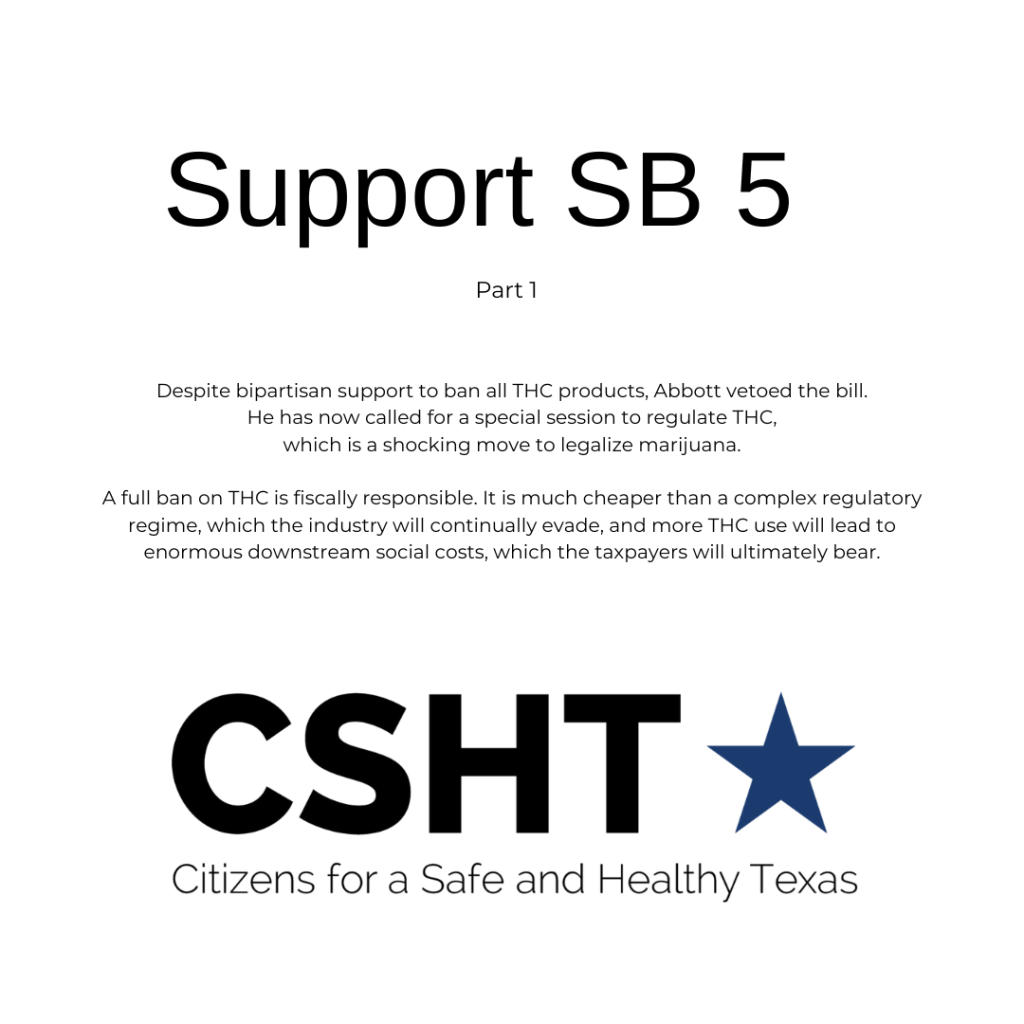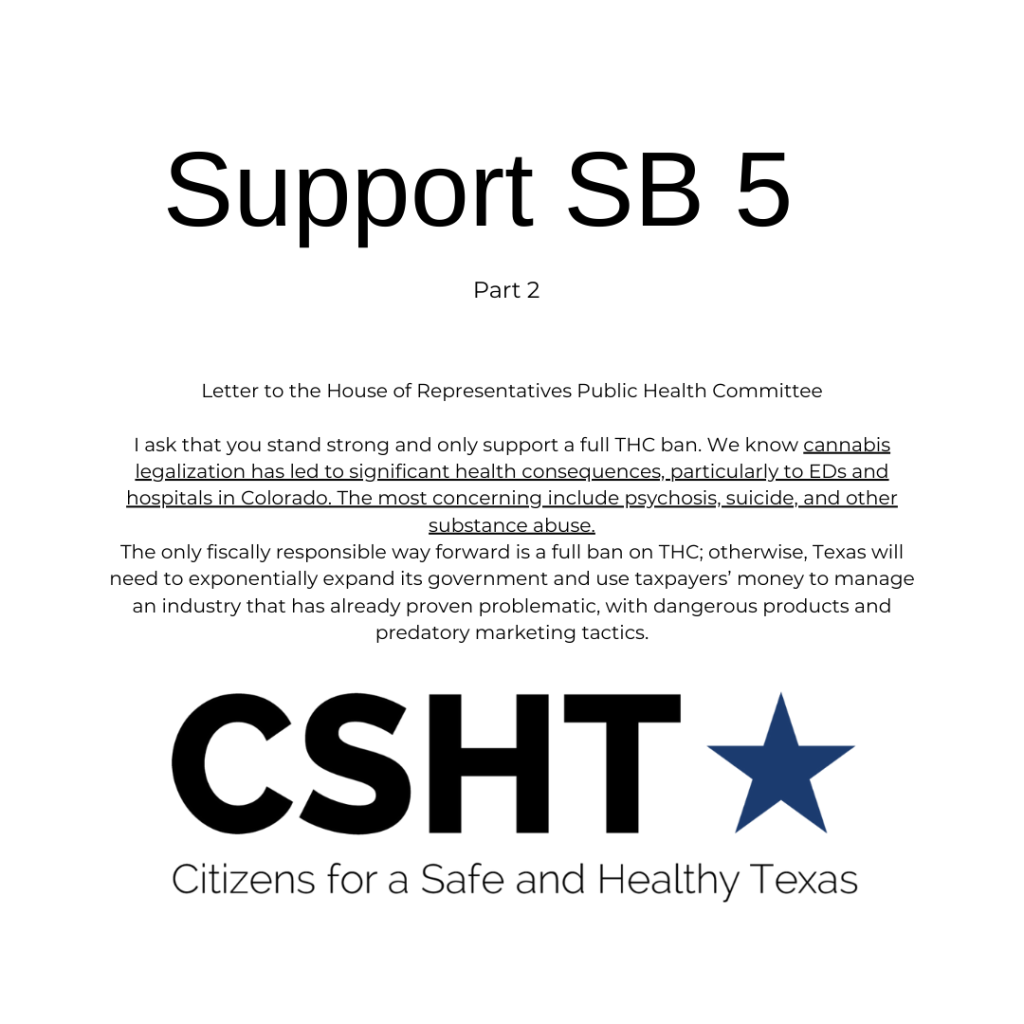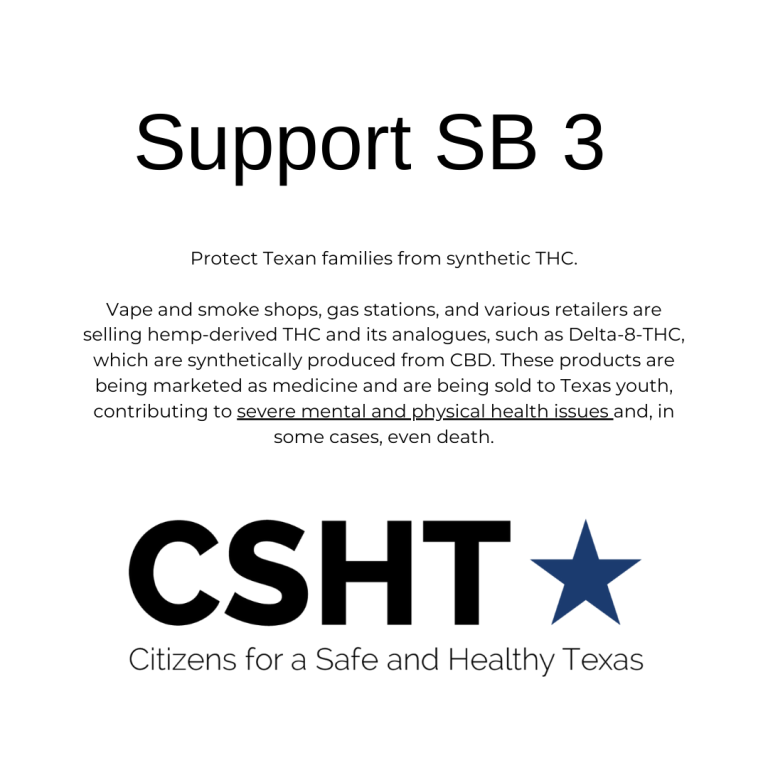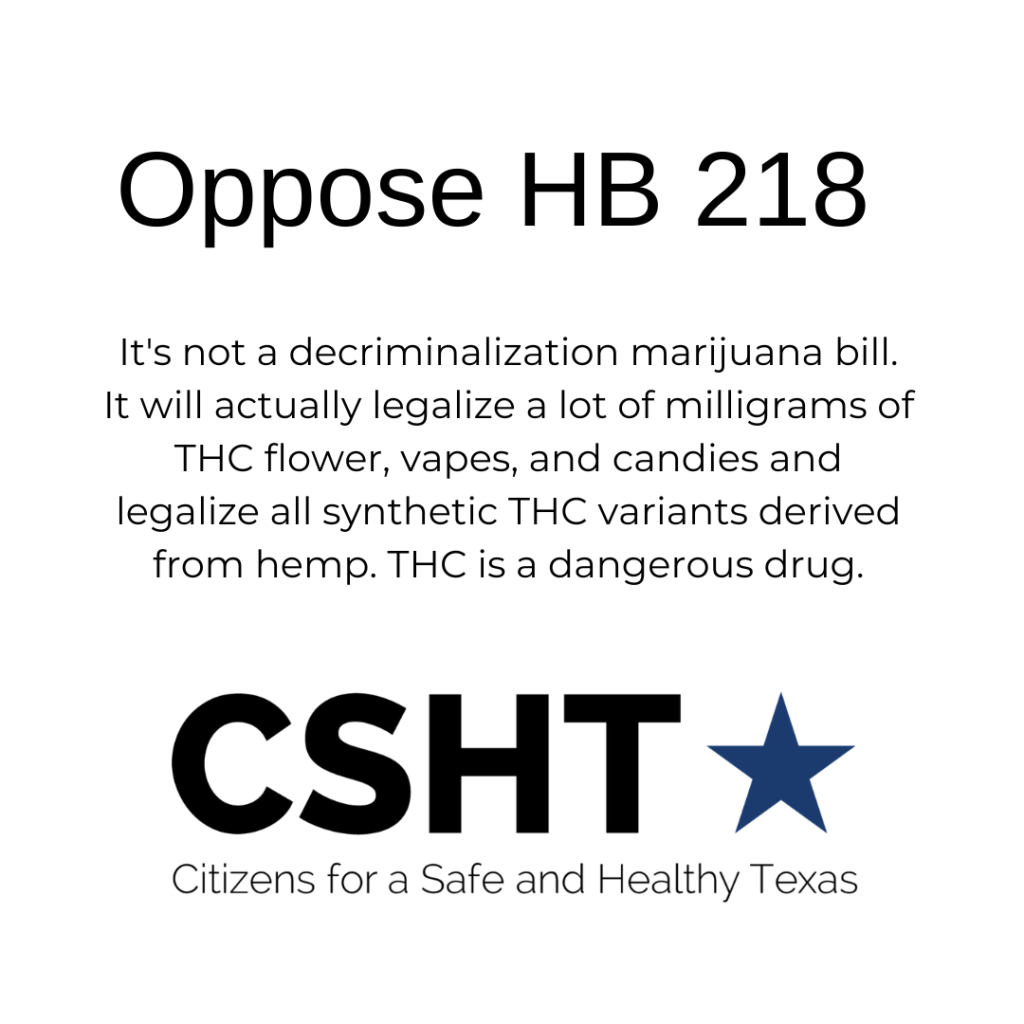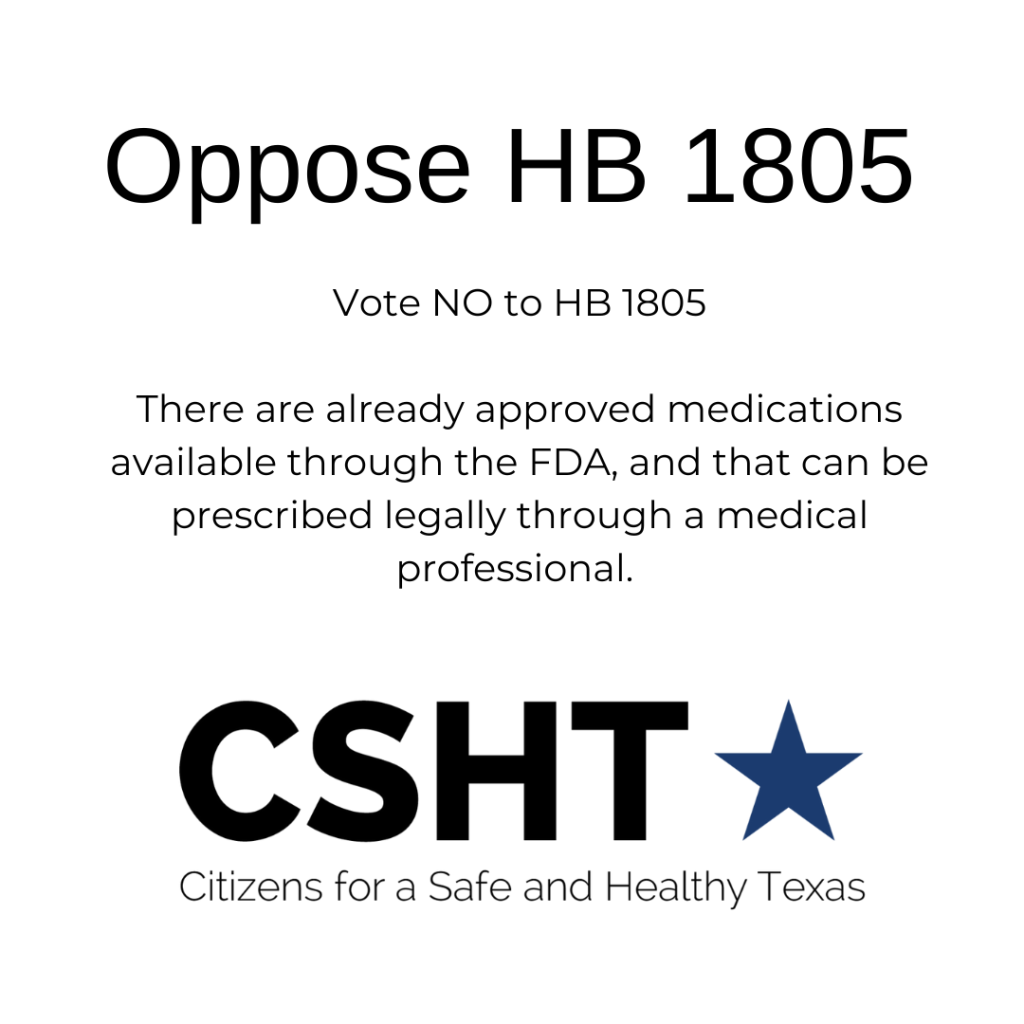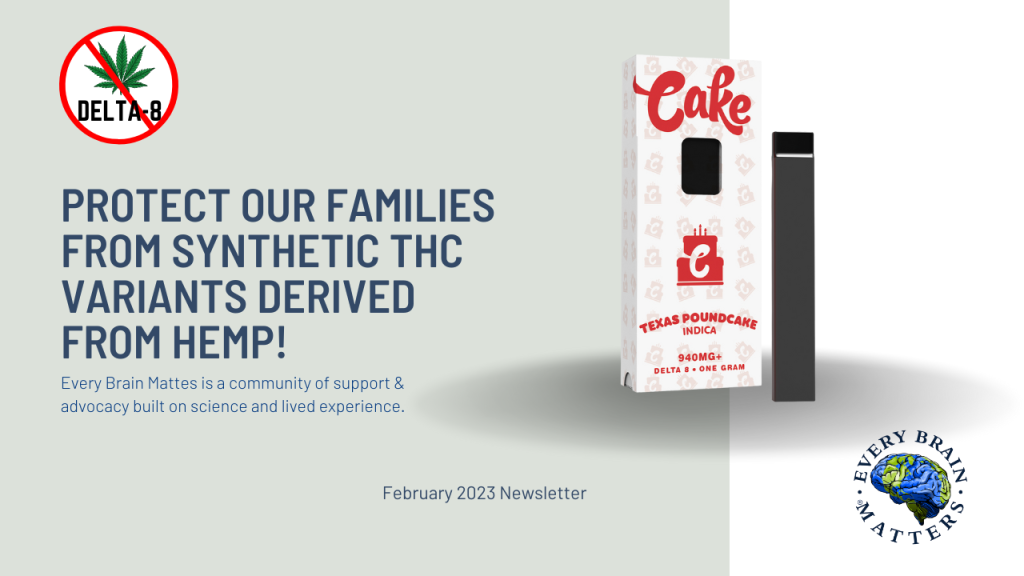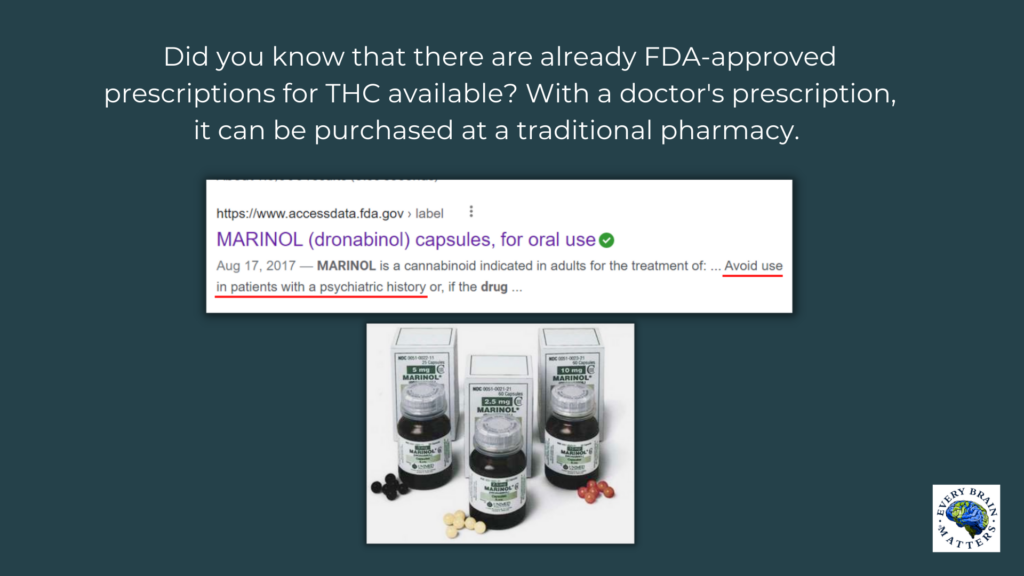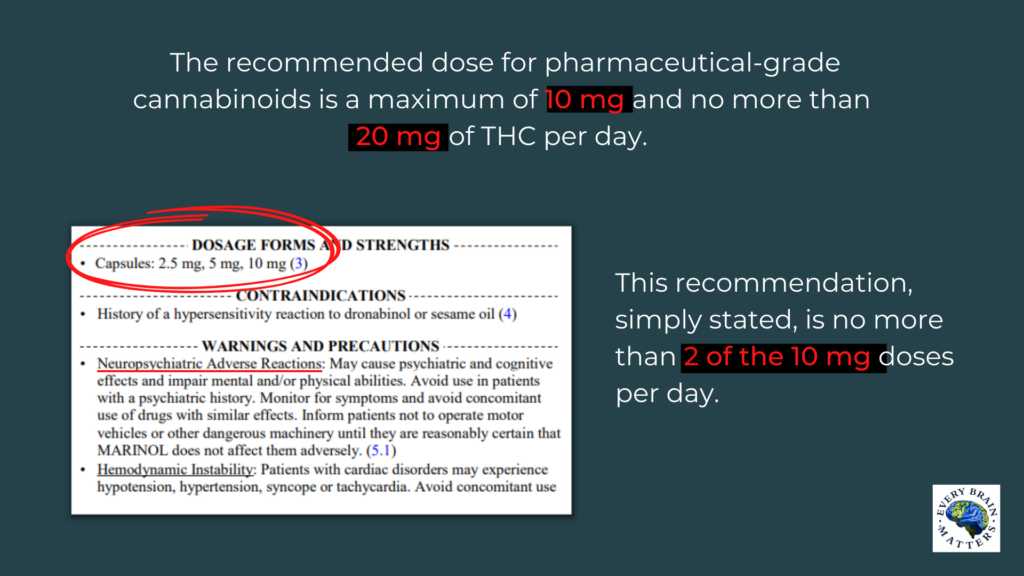Oppose Marijuana Legalization (facts are hyperlinked)
Dear Texas Representative,
We urgently ask you to oppose HB 3652, the legalization of cannabis. HB 3652 will allow the predatory addiction-for-profit marijuana industry to promote more marijuana use and target youth with flavored vapes and candies. Vapes and candies are designed to disguise the foul taste of marijuana and conceal its use from parents, educators, and employers.
There are many reasons to oppose this HARM EXPANSION bill. Here are just a few:
- Marijuana with a THC content over 10% increases the risk of a psychotic disorder, like schizophrenia, by 4 to 5-fold
- 30% of users are becoming addicted to THC, which is called cannabis use disorder or CUD.
- Marijuana users are more vulnerable to become addicted to other harmful substances, including opioids and fentanyl.
- State legal products are so toxic that people have now started developing cannabinoid hyperemesis syndrome (CHS), which causes severe vomiting and other GI issues and which can lead to organ failure and death.
- Marijuana legalization causes more road fatalities. In Colorado, Traffic deaths caused by drivers who test positive for marijuana doubled from 2013 to 2020.
- Marijuana use increases the risk of suicide by up 7-fold.
- Marijuana is the main drug found in suicide deaths for Colorado teens.
- Adolescent cannabis use source: Monitoring The Future 2022
- Cannabis abuse has increased by 245% since 2000. Clinical Toxicology 05 Dec
- Frequent adolescents’ cannabis vaping jumped over two-and-a-half times from 2017 to 2019.
- Occasional adolescent cannabis vaping climbed more than 291% in 2022,
- Young adult cannabis use (source: Monitoring The Future 2022)
- Past year use: 29% in 2011 to 43% in 2021
- Past month use: 17% in 2011, 17% to 29% in 2021
- Daily use: 6 % in 2011 to 11% in 2021
- Vaping marijuana past month: 6% in 2017 to 12% in 2021
- Marijuana legalization only provides a cover and invites criminal operations to manufacture and traffic more marijuana in family neighborhoods.
The DEA states: “Domestic use of marijuana remains high and is likely to increase as the prevalence of state legalization continues to lower the perception of risk to users and potential users. The high availability of high-potency marijuana, marijuana concentrate products, and trendy paraphernalia will likely continue to entice users and potential users.“
High concentrations of THC (products that contain 10 mg or higher) are not proven safe for adults to use. A 10% tax rate will not cover the social, mental, and physical costs.
Vote NO to HB 3652.
Thank you,
Other important information about this bill.
2.5 oz of cannabis flower or 15 g of cannabis concentrates is a very large amount of marijuana that can easily get into the hands of youth and fuel the black market.
– 2.5 oz of dry marijuana equals about 150 joints
A joint from the 1990s had about 5% THC which equals 50 mg of THC in each joint.
Today’s joint is at least 4 times stronger (20% THC), so each joint in today’s market has about 200 mg of THC.
150 joints x 200 mg THC = up 30,000 mg of THC!
–15 grams of THC concentrate is 15,000 mg of concentrate.
Assuming 60% potency, that is 9,000 mg of THC (15,000 X 60%).
If the concentrate is 90% THC, that is 13,500 mg of THC (15,000 X 90%).
This is equivalent to ~45 – 200 mg joints (9000 mg/200) if 60% THC and ~68 – 200 mg joints (13,500 mg/200) if 90% THC. This is an outrageous amount of THC!
Ban Synthetic THC Variants Derived from HEMP
Expanding access to marijuana and more drugs does not benefit Texas families. The Drug Policies Alliance’s primary goal is to legalize and commercialize all drugs, so your commitment to this issue is crucial to protect Texan’s health and safety.
We ask you to please continue holding the line in Texas and ban hemp THC products.
Below is a list of resources to prepare you.
Do Not Increase the amount of THC from 1.0% THC per 1 gram dry weight to 5.0% in the Texas Compassionate Use Program (TCUP)
- This means just 30 ml of oil could contain up to 1,390 mg of THC. The FDA recommends only up to 20 mg of THC due to psychiatric side effects. https://www.accessdata.fda.gov/drugsatfda_docs/label/2017/018651s029lbl.pdf
2. Even with the low-strength THC common in the last century, 15% of users reported psychotic episodes:
https://www.sciencedirect.com/science/article/abs/pii/S037687169601277X?via%3Dihub
Administration of a moderate dose of pure THC would elicit transient psychotic symptoms in study subjects:
https://www.nature.com/articles/1300496.pdf
https://www.ncbi.nlm.nih.gov/pmc/articles/PMC3055738/pdf/npp2010222a.pdf
https://jamanetwork.com/journals/jamapsychiatry/fullarticle/1107444
https://www.ncbi.nlm.nih.gov/pmc/articles/PMC4332941/pdf/sbu098.pdf
For clinical studies showing that THC can cause psychotic symptoms in people with no family history, see:
https://www.nature.com/articles/1300496.pdf
https://www.ncbi.nlm.nih.gov/pmc/articles/PMC3055738/pdf/npp2010222a.pdf
https://www.ncbi.nlm.nih.gov/pmc/articles/PMC4332941/pdf/sbu098.pdf
Marijuana is more likely to lead to chronic psychosis than any other drug studied. About half of those who experience a marijuana-induced psychotic break will eventually develop a schizophrenia spectrum disorder:
https://ajp.psychiatryonline.org/doi/10.1176/appi.ajp.2017.17020223
https://www.psychiatrist.com/jcp/article/Pages/2013/v74n01/v74n0115.aspx
https://ajp.psychiatryonline.org/doi/abs/10.1176/appi.ajp.2017.17020223?rfr_dat=cr_pub%3Dpub
med&url_ver=Z39.88-2003&rfr_id=ori%3Arid%3Acrossref.org&journalCode=ajp

Do Not Expand conditions to treat chronic pain in the Texas Compassionate Use Program (TCUP)
Marijuana (CBD and THC) has not been a proven opioid substitute. https://jamanetwork.com/journals/jamanetworkopen/fullarticle/2799017
Marijuana-legal states have higher opioid death rates than non-marijuana-legal
https://www.sciencedirect.com/science/article/abs/pii/S0027968422000529
https://www.pnas.org/doi/10.1073/pnas.1903434116
Marijuana-legal states fentanyl death rates than non-marijuana-legal https://www.sciencedirect.com/science/article/abs/pii/S0027968422000529
Marijuana has not been an approved analgesic/pain reliever.
https://neurosciencenews.com/pain-cannabis-surgery-21701/
MMJ patients have higher cannabis use disorder and no improvement on pain
MJ use increases the risk of developing opioid use disorder and opioid misuse. https://www.ncbi.nlm.nih.gov/pmc/articles/PMC7855765/
National Institute on Drug Abuse reports that people who use marijuana are more than twice as likely to be dependent on or addicted to prescription opioids and six times more likely to take pain pills. https://archives.drugabuse.gov/news-events/news-releases/2017/09/marijuana-use-associated-increased-risk-prescription-opioid-misuse-use-disorders
There are ZERO International pain organizations which support the use of cannabis for pain (IASP is the largest one) https://www.iasp-pain.org/publications/iasp-news/iasp-position-statement-on-the-use-of-cannabinoids-to-treat-pain/
marijuana before entering the hospital for a surgical procedure made pain during recovery significantly worse. People who used weed beforehand also needed more anesthesia during surgery, and undergoing anesthesia
https://www.cnn.com/2020/10/05/health/weed-pain-anesthesia-increase-wellness/index.html
